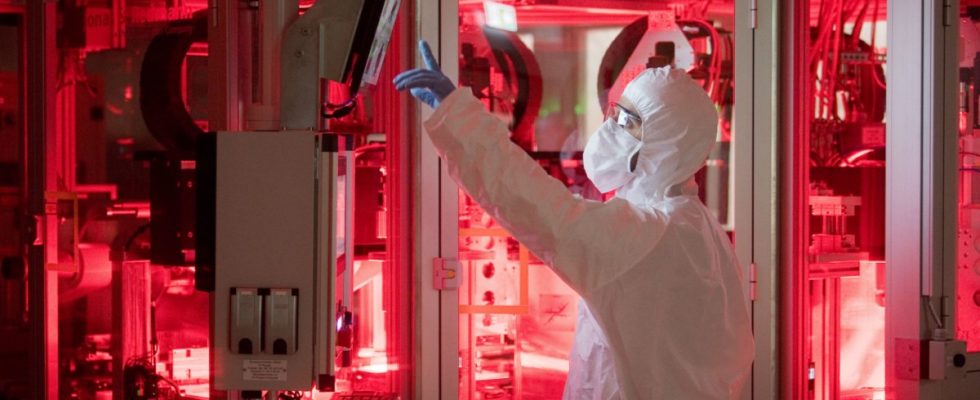“And what about the batteries?” Not a single discussion goes by between electric car advocates and critics in which the life cycle assessment of the high-voltage batteries is not discussed at some point. E-cars are significantly more climate-friendly than combustion engines. But the extraction of raw materials in Africa and South America is anything but conflict-free. Indigenous peoples on whose land the mines are located complain time and again about land grabbing and air and water pollution. In 2022 alone, after a International Energy Agency (IEA) report sold over ten million electric cars. The worldwide boom in electromobility is exacerbating the problems in the mining areas. And the laboriously obtained raw materials often end up in the garbage: recycling is complicated and can only be achieved with the help of often toxic chemicals. A method discovered by researchers in Karlsruhe could now change that. But independent experts are reluctant.
The amounts of waste in question are currently still small, but this is likely to change in the coming years. As a precaution, the chemical company BASF is building a recycling factory in Schwarzheide, Brandenburg, which is scheduled to open in 2024. Volkswagen and Mercedes-Benz are also setting up pilot plants. In addition, there are recycling companies that are independent of the car industry and suspect a million-dollar business.
Over 70 percent of the lithium is to be recovered with the process
However, the currently common recycling processes are still in the testing phase; they are complex, expensive and also problematic from an ecological point of view. First the battery modules are gutted, then they end up in a shredder. After that, plastic and metal parts are filtered out. A so-called black mass remains, which contains the coveted raw materials – lithium, nickel and cobalt. Various chemicals are needed to remove them from this mass. On top of that, this last and most important step has so far only worked in the laboratory.
Researchers at the Karlsruhe Institute of Technology (KIT) have now developed a process that does not require toxic chemicals. In the journal Nature Communications Chemistry the team around Oleksandr Dolotko presents the new method with which over 70 percent of the lithium from battery waste is to be recovered. To achieve this, the experts not only shred the batteries, but also grind them up. In the end, they use aluminum, an element that is already contained in the battery cathode. The aluminum reacts with the ground up waste to form a water-soluble lithium compound. Finally, the mixture is dissolved in water and heated. The water evaporates and a lithium salt remains, from which new lithium-ion batteries can be manufactured.
The KIT Institute for Applied Materials – Energy Storage Systems (IAM-ESS) cooperated with the Helmholtz Institute Ulm for Electrochemical Energy Storage (HIU) and the energy company EnBW for the research project. Since the mechanochemical reaction takes place at ambient temperature and pressure, the process is particularly energy-efficient, writes the KIT. Another advantage is the simple process, which makes it easier to use on an industrial scale.
However, other scientists who deal with battery recycling are skeptical. “The process described is certainly interesting because it uses relatively few harmful chemicals,” says Christoph Neef, a researcher at the Fraunhofer Institute for Systems and Innovation Research (ISI). However, the recovery rate of 70 percent is quite low. In industrial pilot plants, recovery rates of around 90 percent have already been achieved, albeit with more chemicals and energy being used. “So I wouldn’t call the process ‘the solution,'” says Neef. A next step would be the application to real black mass, which contains many other components in addition to the cathode material and the aluminum foil.
Mareike Partsch, head of department at the Fraunhofer Institute for Ceramic Technologies and Systems (IKTS) in Dresden, sees it similarly. She speaks of an “interesting approach”, which, however, only considers lithium. Other critical metals contained in the ground battery mass would also have to be filtered out. And: “Possible impurities from real black matter (electrolyte, copper, fluoride) are not considered,” explains Partsch. The purity of the lithium carbonate will probably decrease in real operation.
The expert is also critical of the recovery rate of a maximum of 76 percent: it could be too low in the future if higher recycling rates are prescribed. The European Union is currently revising its “European Green Deal”. Battery Regulationwhich means that stricter minimum recycling quotas will apply in the future.
Whatever the final specifications, an effective recycling process on an industrial scale is necessary, not only for ecological but also for economic reasons. Loud ADAC A single 50-kilowatt battery in an electric car contains around four kilograms of lithium, eleven kilos of manganese, 12 kilos of cobalt, 12 kilos of nickel and 33 kilos of graphite. In addition, there are discarded laptops, mobile phones and other electronic devices that contain tons of raw materials – a treasure that simply ends up as hazardous waste without effective recycling.

